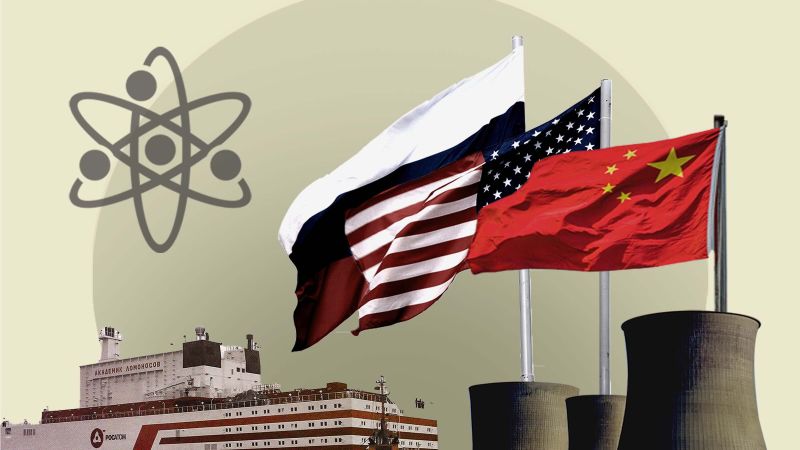Off the Siberian coast, not far from Alaska, a Russian ship has been docked at port for four years. The Akademik Lomonosov, the world’s first floating nuclear power plant, sends energy to around 200,000 people on land using next-wave nuclear technology: small modular reactors.
This technology is also being used below sea level. Dozens of US submarines lurking in the depths of the world’s oceans are propelled by SMRs, as the compact reactors are known.
SMRs — which are smaller and less costly to build than traditional, large-scale reactors — are fast becoming the next great hope for a nuclear renaissance as the world scrambles to cut fossil fuels. And the US, Russia and China are battling for dominance to build and sell them.



If I’m not mistaken SMRs also handle power demand shifts better and don’t have to just do a base load. Something very useful with the growth of renewables and how they are not always supplying power.
That is a particular type of reactor that is in testing.
https://www.forbes.com/sites/scottcarpenter/2020/08/31/bill-gates-nuclear-firm-says-new-reactor-can-backstop-grid-with-molten-salt-storage/?sh=d81c7c55e65c
Renewables being unable to do base load is just a myth that has been debunked countless times.
I’ve love for just one of the people anonymously downvoting to chime in. What you wrote is completely accurate but every nuclear-themed post here and on Reddit is downvoted without anyone putting forward a counter-argument.
here https://www.pnas.org/doi/full/10.1073/pnas.1610381114 we can talk about this, feel free to put forward counter arguments, the gist of the cited paper is that previous studies claiming 100% renewable baseload is possible requires sketchy manipulation of the expected demand as well as currently unavailable storage technology on an almost impossible scale. We’re working on all kinds of storage solutions but the reality is we’re not there yet. I’m rooting for molten salt storage or compressed gas storage rather than ramping up more lithium battery storage. Flow batteries are promising as well, but in any case we won’t have enough storage or transmission capability to have a 100% renewable baseload in the next couple of decades.
Looks like someone beat me to it :)
“In sum, Clack et al.’s analysis is riddled with errors and has no impact on Jacobson et al.’s conclusions.”
https://www.pnas.org/doi/10.1073/pnas.1708069114
Surely there wouldn’t any astroturfing be going on here, would there?
I don’t think it’s astroturfing, it’s just cognitive dissonance. Lots of people were raised thinking that nuclear power was the future and they can’t let go of that. That’s why they downvote without commenting - there’s no factual case for new nuclear and that goes double for SMRs.
No, it’s because it’s an off topic tangent. We’re talking about SMRs doing not-baseline. Not renewables doing baseline. The very fact they brought it up is indication of binary thought patterns like team sports thinking. “They are for this one thing I don’t like, therefore they must be against the thing I do like!” kind of thing. False dichotomy.
Apparently it’s also false on top of that. Go figure.